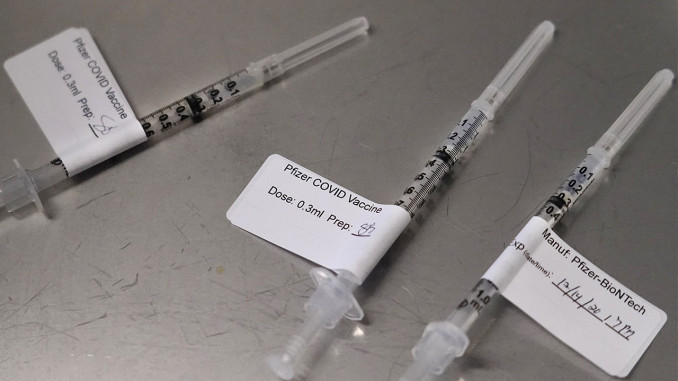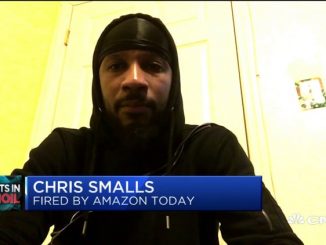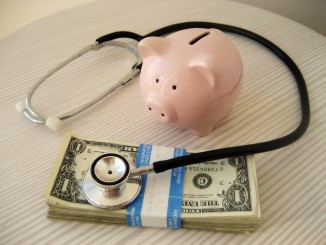
This article, written by Dr. Dipti S. Barot, a primary care physician in the San Francisco Bay Area, was originally published by the San Francisco Chronicle on Oct. 15, 2021. It offers a clear and thorough description of the health protection of full vaccination from COVID-19. We have reposted it here with permission from the author. Dr. Barot is on Twitter: @diptisbarot
For the first several months after COVID vaccines became widely available, I often had to fend off queries from skeptical patients about whether the risks of getting the vaccine were worse than the benefits.
My answer was to immediately point to our local hospital and tell them about how almost all the COVID beds and intensive-care units were filled with the unvaccinated.
More recently, however, as reports of some breakthrough infections of the vaccinated began to make news, the FAQ by unvaccinated patients started to change.
“Why should I bother getting the vaccine when I can get COVID anyway?”
This line of questioning isn’t unique to my patients. In the words of still unvaccinated NBA superstar Bradley Beal: “I would ask the question to those who are getting vaccinated, ‘Why are you still getting COVID?’”
Well, here’s my answer to Mr. Beal and anyone else who has a similar inquiry:
COVID vaccines are wildly successful in reducing transmission, hospitalization and death. Unvaccinated people are eight times more likely to be infected, 29 times more likely to be hospitalized and 11 times more likely to die than their vaccinated peers. However, while these vaccines were designed to create long-lasting immunity in the blood, they are less effective at creating local immunity in the upper airways. As a result, both the vaccinated and unvaccinated can accumulate large viral loads of the very effectively replicating delta variant in their noses and throats (though the viral load comes down more quickly in a vaccinated person, making them contagious for a shorter period of time).
However, this is where the similarity ends between those who are protected by vaccines and those who are not. The immune system can be complicated, but some basic understanding of how it works can go far in relaying the importance of getting your COVID shot.
Our initial response to any pathogen is the same, whether vaccinated or unvaccinated: Our innate immune system recognizes an invader and launches a non-specific response to the attacker. This first line of defense — consisting of white blood cells such as neutrophils and monocytes — is immediate but short-lived, lasting hours to days.
We know the main points of entry for the coronavirus are our noses and throats. Both the vaccinated and unvaccinated who feel ill can experience familiar symptoms like cough, sore throat, nasal congestion, fever, body aches, headaches and something unfamiliar that often freaks people out the most: loss of taste and smell.
These symptoms can last a week while the other part of the immune system tries to marshal the resources to fire up the second line of defense: the adaptive immune response.
Here is where an unprotected, unvaccinated patient can have a very different experience from one who is vaccinated. Those who have been vaccinated carry deeper immunity circulating in their blood that will prevent their organs from getting overwhelmed with the virus.
Those without that protection can enter the fight of their life. Here’s why.
The adaptive immune response, the more specific of the responses, can take days to weeks to fire up. It is a race against the virus to see which will be faster.
This part of the immune system is made of white blood cells called lymphocytes, and some of the cells that offer long-term protection are “memory” B cells and the “killer” T cells. The vaccinated body has B cells that have been primed to swiftly recognize and remember what the spike protein of the virus looks like and make specific defender antibodies. And it makes T cells that are ready to rapidly attack and eliminate infected cells. When this part of the immune system has been given this leg up, talking to my vaccinated COVID patient sounds like this: “Yeah, the cough has gotten a lot better and the body aches are gone. I am definitely on the upswing.”
For the unvaccinated, however, the fight is just beginning.
Without the aid of a vaccine, the immune system takes longer to produce longer-lasting, more specific antibodies to fight COVID — antibodies that would have already been there had their adaptive immune system been exposed to the vaccine beforehand. And while an unvaccinated person’s body is taking its sweet time ramping up these defenses, the COVID virus is replicating, taking over cells and doing a hop, skip and jump down to the lungs while wreaking havoc along the way.
Talking to an unvaccinated patient in week two of symptoms can sound more like this: “This cough is not going away, and I feel out of breath when I walk around the house and my oxygen level on the machine goes down to 94%.”
There is a good chance you can hear these patients struggle to catch their breath when they are speaking.
These and other high risk patients are who we try to hurry in for what’s known as monoclonal antibody treatment, an infusion of synthetic antibodies made in a lab which can prevent further deterioration of symptoms. (Vaccinated patients have already made a natural version of these antibodies via their own adaptive immune system.) This treatment is still under emergency use authorization by the Food and Drug Administration, but for some reason many patients are more open to getting it than the Pfizer vaccine that now has full FDA approval.
If an unvaccinated patient is unable to get monoclonal antibody treatment in time — as many still aren’t — or it isn’t effective, that likely means a hospital admission with possible prolonged stay. From here, there are innumerable paths to extreme illness or even death.
In trying to fight the virus without an assist from the vaccine, patients who show up or are sent to the emergency room have myriad “fish out of water” symptoms: the inability to catch their breath, heaving breaths like they are running a marathon; that’s how hard patients at this stage of the illness are breathing, except they are not moving, just existing. And just existing is exhausting. They complain of burning lungs that feel like needles are poking them, tightness and a weight in their chest, feelings of exhaustion and drowning. Their respiratory rates are often double or triple the typical 12 to 16 breaths per minute.
At this point, most patients have worrisome oxygen levels. Standard oxygen therapy often doesn’t cut it, nor does cranking up high-flow oxygen. Instead, patients need the oxygen forced down their lungs with a BiPap machine, a type of noninvasive ventilator where a mask is strapped to your face. Often times, patients are proned — laid face down to improve ventilation.
Meanwhile, inflammatory cells and fluid are flooding their lungs, where the virus is slowly overtaking the tiny sacs that are responsible for air exchange. These sacs, the alveoli, usually exchange carbon dioxide for oxygen so that your body can send this freshly oxygenated blood to your heart, brains and other vital organs. But now, the cells that do this gas exchange are overtaken by the virus. Each cell that is taken over bursts forth more virus to infect more cells. The very cells that take our carbon dioxide and exchange it for fresh oxygen are blocked from doing this vital task. It’s no surprise that oxygen levels drop.
When the BiPap machine is not enough to keep patients stable and oxygenating their blood, the unvaccinated must move to a ventilator. Many clinicians have described this as the 50-50 point, where the odds of survival are like a coin toss.
This is when — alone, because visitors are not allowed during the pandemic — an unvaccinated person will say goodbye to family on FaceTime. Unless, of course, the patient did not have the luxury to plan this because of the need to be intubated as an emergency. My ICU colleagues tell me that usually it is the family who is crying on the screen and not the patient — because the marathon-breath breathing patient is too exhausted to muster the strength for sobs.
Imagine not having enough energy to cry for your last goodbyes.
The unvaccinated patient is then readied for a machine to breathe for them with sedatives and paralytic drugs. Perhaps this is a patient who can make it. But perhaps this is the patient who then goes into kidney failure and also needs to be connected to a dialysis machine. Or perhaps this is a patient for whom the ventilator isn’t enough and needs to be put on a heart-lung machine called ECMO, because at this juncture the patient needs a machine to do both the job of the heart and the lungs. And, hopefully, while all this is going on, the patient doesn’t have blood clots in the brain called “shower” emboli, or suffer from a spontaneous pneumothorax (a punctured lung), or any number of life-ending complications that can so readily occur at this stage.
Patients only get to this point if they live in a state that had mask and vaccine mandates and have hospitals that aren’t overrun and rationing care a year and a half into a pandemic. So, they have access to BiPap, ventilators, ECMO and ICU beds. They’re lucky enough not to have their family scouring for a hospital bed on social media.
By this point, if they survive, unvaccinated patients are unrecognizable with puffy, fluid-logged bodies, connected to endless lines and tubes and wires and catheters, suffering from not just the ravages of the virus, but from the effects of all of these necessary but invasive interventions that have kept them alive.
For medical staff, it was one type of trauma taking care of patients at this stage when there wasn’t a vaccine. But when a patient who chose not take a vaccine hits this point in their disease course, the care team hits a depth of devastation and despair like no other.
The pervasive feeling of “it didn’t have to be this way” haunts the room, especially with younger patients in their 30s and 40s who have been admitted in larger numbers during this delta wave.
It is called the novel coronavirus for a reason — it is a strain not previously identified in humans. Because of this, we have not developed immunity from it, and thus, it makes all of us more susceptible to getting it and spreading it.
So, yes, you can still get COVID if you are vaccinated. But my ICU colleagues will probably not be sticking a tube down your throat to help you breathe because your adaptive immune system lost its race with the virus. Yes, you can still get COVID if you are vaccinated. But you will probably not be the patient my nephrology colleague will have to put on dialysis because of the kidney damage done by the virus.
If you were going to be in a fight for your life, would you want to be armed and ready or still fashioning your weapons after the enemy has attacked? That is my answer to NBA players like Beal and others who are still unclear on the reason for vaccination. Being unvaccinated means that you are unarmed and unprepared for an attack, with luck as your only weapon.
Without a shot in your arm, you’re heading into the fight of your life blind.




